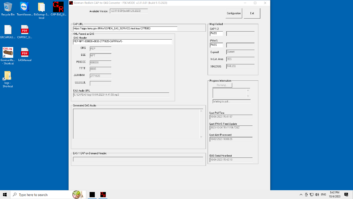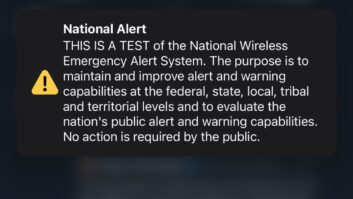The U.S. Department of Homeland Security is seeking information from Common Alerting Protocol, Emergency Alert System and alerting vendors.
Issued this week, the RFI is for information and planning purposes, not a Request for Proposal, although I think this could be a prelude to one for a CAP-based digital alert and warning system, a next-gen alerting system incorporating messages to all kinds of personal devices. EAS is a part of the new scheme.
One person in the know tells me the RFI specs seem to reflect a renewed effort by the government to examine commercial off-the-shelf CAP-based alerting technology. Indeed, under “Purpose,” the DHS states in the document that the government is soliciting information on the availability of such commercial products.
The specs cover alert origination, alert and warning processing, alert routing and “other interoperability and conversion” functions. The DHS is seeking white papers first; those manufacturers selected to take part in the second phase of the RFI will demo the product.
Responders get one shot to ask questions (e-mail only) by Sept. 2. White papers are due Sept. 12 via e-mail to [email protected].
With this request for information, my guess is the government is trying to cover all bases before adopting CAP as the standard for the Integrated Public Alert and Warning System. The questions seem to give insight into what it’s looking for. In July, FEMA, under DHS, said it intended to adopt CAP in the first quarter of the coming year and that EAS participants, including broadcasters and state and local emergency managers, must be in compliance with the CAP 1.1 standard within 180 days of its formal adoption.
EAS encoder/decoder manufacturers have said FEMA has yet to specify what the companies will need to build to meet requirements and what remains a question is whether the tiny universe of EAS box makers can meet the necessary demand in time.











